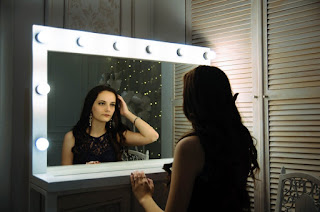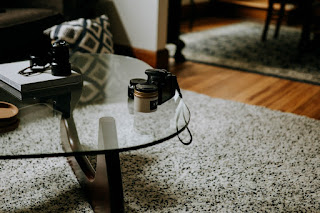Wednesday, June 19, 2019
Brief History of Vanity Mirrors
Vanity mirrors, whether attached to ornately decorated vanity tables or standing alone, have played an interesting role in helping people look their best for centuries. The simplest definition is a small (or large) mirror used for applying makeup. But that definition belies the level of inventiveness and craftsmanship that people have used over the years in crafting vanity mirrors as part of vanity tables or dressing room sets that embody luxury and sophistication.
Monday, April 29, 2019
Choosing Table Top Glass: Three Factors to Consider
From classic end tables to modern dining sets, glass embodies a sleek look that complements any design style. Many types of glass can be used for table tops, but considering a few specific details can help determine the best choice.
Before deciding on a type of glass, buyers should have an idea of the overall look they want for the table as well as the room it will be in. Cut glass can be made in different shapes, sizes, and patterns to match any buyer's preferences.
While not a necessity, tempered glass is a popular option for glass table tops because of its strength. The tempering process subjects glass to thermal and chemical treatments, making it up to seven times harder than regular glass without changing its weight or appearance. Additionally, tempered glass shatters into pebbles instead of jagged shards, making it a safer choice. Most glass table tops over 1/2 inch thick aren't tempered because their thickness provides additional strength.
The type of table and what it will be used for are determining factors when choosing the thickness of glass table tops. They often come in the following thicknesses:
At Victorville Glass Company Inc., we have decades of experience providing residential and commercial customers across San Bernardino County with exceptional glass products and services. If you're considering a glass table top, give us a call today at 760-245-3456.
The Intended Style
The Importance of Strength
The Purpose of the Table
- 1/2 inch: The thickest cut for the heaviest loads, this option is ideal for tables that are expected to hold a significant amount of weight.
- 3/8 inch: A step thinner than the 1/2-inch option, this choice can maintain a substantial amount of weight.
- 1/4 inch: This thickness is best for small or infrequently used tables, tables with an outside frame, or as a table top cover (cut glass that rests on top of an existing table top).
- 3/16 inch: The thinnest option, this cut is recommended only for table top covers or small, light tables with supporting frames.
At Victorville Glass Company Inc., we have decades of experience providing residential and commercial customers across San Bernardino County with exceptional glass products and services. If you're considering a glass table top, give us a call today at 760-245-3456.
Monday, February 25, 2019
How to Maintain an Automatic Sliding Glass Door
An automatic sliding glass door is a common feature at offices, retail stores, and hospitals. The best sliding glass door is one that people barely notice as it efficiently and silently opens on approach. For that reason, maintaining an automatic sliding glass door to ensure that it continues to operate smoothly is essential for customer satisfaction. Here are three things any business owner or facility manager can do to keep their sliding glass doors working well.
While an automatic glass door shouldn't demand attention every day, there are a few things to check regularly. The safety device, either a laser sensor or a rubber leaf that will retract if it contacts something, must always be working properly. Any cracks or breaks in the glass itself should be repaired immediately. Owners and managers should also ensure that the door area is free of any obstacles.
Aside from the regular checks, the door should be inspected and maintained at least twice a year by a qualified technician. This includes checking the door sensors to make sure they are working properly, oiling the gears and drive belts in the mechanism, and ensuring that the guide rails have not been damaged.
Whether regular repair services are done by an outside team of professionals or by an experienced in-house facilities manager, it is important to keep a log book of all maintenance done. This will help identify and correct any recurring problems and provide important information for future maintenance technicians.
At Victorville Glass Company Inc., we have over 55 years of experience of glass services and sales for both residential and commercial customers. We offer 24-hour emergency repair services to get your doors open for business as soon as possible. Call us at 760-245-3456 today to learn more.
Image by Mike Kalasnik from Wikimedia Commons.
Regular Maintenance
Full Inspection and Maintenance
Keep a Record
At Victorville Glass Company Inc., we have over 55 years of experience of glass services and sales for both residential and commercial customers. We offer 24-hour emergency repair services to get your doors open for business as soon as possible. Call us at 760-245-3456 today to learn more.
Image by Mike Kalasnik from Wikimedia Commons.
Subscribe to:
Comments (Atom)


